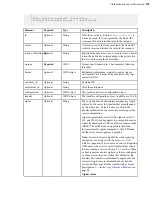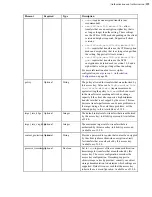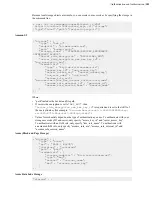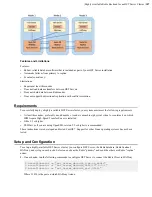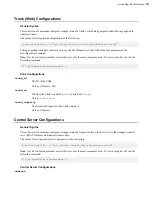
| Highly-Available Redis Backend for an HST Server Cluster |
307
Features and Limitations
Features:
• Robust, reliable database software that is included as part of your HST Server installation.
• Automatic failover from primary to replica.
• Eventual consistency.
Limitations:
• Requires at least three nodes.
• Does not load-balance transfers between HST Servers.
• Does not shard data between Redis nodes.
• Does not support bi-directional replication with conflict resolution.
Requirements
To sucessfully deploy a highly-available HST Server cluster, your system must meet the following requirements:
• At least three nodes, preferably an odd number. A node is a machine (physical, virtual, or container) on which
IBM Aspera High-Speed Transfer Server is installed.
• Glibc 2.5 or higher.
• SSH Server. If you are using OpenSSH, version 5.2 or higher is recommended.
These instructions were developed and tested CentOS 7. Support for other Linux operating systems has not been
tested.
Setup and Configuration
To set up a highly-available HST Server cluster, you configure HST Server, the Redis database, Redis Sentinel,
HAProxy, and syslog on each node. Select one node as the Redis "primary" node and the others are Redis "replica"
nodes.
1.
On each node, run the following commands to configure HST Server to connect the Redis Client to HAProxy:
$ asconfigurator -x "set_server_data;db_type,ha_redis"
$ asconfigurator -x "set_server_data;db_host,127.0.0.1"
$ asconfigurator -x "set_server_data;db_port,31414"
Where 31414 is the port on which HAProxy listens.






